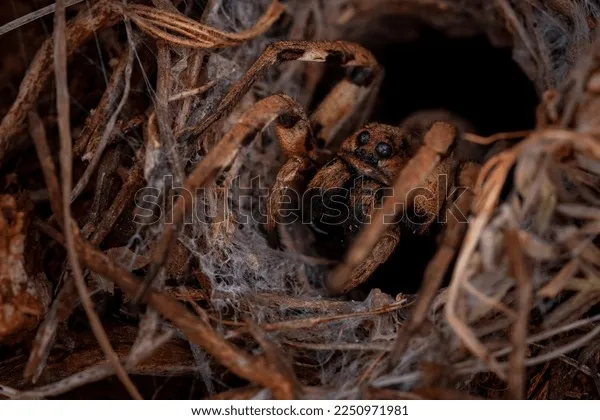What is a Tarantula Scream?
The idea of a tarantula scream might conjure images of a terrifying, high-pitched shriek echoing through the night. However, the reality is far more complex and fascinating. While the term ‘scream’ might be used colloquially, it’s not an accurate description of the sounds these arachnids produce. Tarantulas, unlike many mammals, don’t have vocal cords. Instead, they communicate using a variety of other methods, including stridulation, hissing, and even drumming. Understanding how tarantulas make sounds and what those sounds mean is key to understanding their behavior and survival strategies. This article will delve into the truth behind the ’tarantula scream’ and explore the amazing sounds these creatures actually make.
Debunking Myths about Tarantula Screams
Many misconceptions surround tarantula sounds. One of the most common is the belief that they scream in the same way humans do. This myth is often perpetuated by movies and popular culture, which tend to sensationalize animal behavior. Another misconception is that all tarantulas make the same sounds. The truth is, the sounds a tarantula makes, and the way it makes them, varies greatly depending on the species, age, and even the individual spider’s personality. It’s important to approach the topic with a critical eye, separating fact from fiction and understanding the true nature of these fascinating creatures. A correct understanding of the sounds made by tarantulas requires dispelling these popular myths.
The Real Sounds Tarantulas Make

Tarantulas communicate through a variety of methods, the most common of which are stridulation and hissing. These sounds serve different purposes, from courtship and territorial defense to deterring predators. The sound produced and its purpose depend greatly on the species of tarantula. The environment and behavior of the tarantula influence what sounds are made and when. These sounds play a crucial role in the tarantula’s life and behavior. Listening to these sounds can provide invaluable information about the well-being of the tarantula.
Stridulation
Stridulation is the act of producing sound by rubbing two body parts together. In tarantulas, this typically involves rubbing the legs against the chelicerae (mouthparts). This produces a hissing or chirping sound. This is often used during courtship, with male tarantulas using it to attract females. It can also be used as a warning signal to potential predators. The sounds vary based on the tarantula species. This can be used to identify the tarantula in some cases. The speed and rhythm of stridulation can also convey different messages, making it a sophisticated form of communication.
Hissing
Hissing is another common sound produced by tarantulas. This is usually created by the tarantula rubbing its legs against its fangs or the base of its chelicerae, or by forcing air through their book lungs. This sound is often a defensive mechanism, used to startle potential predators. The intensity of the hiss can vary based on the perceived threat. Some species are known to hiss more aggressively than others. This sound is a clear warning signal, often accompanied by a defensive posture. It is a key element of the tarantula’s defense strategy, and can often dissuade predators.
Other Sounds

In addition to stridulation and hissing, some tarantulas can produce other sounds, such as drumming. This involves tapping the legs or abdomen on the ground, and it is used to communicate with other tarantulas, usually during courtship or territorial disputes. The types of sounds vary based on the species, but are always related to communication, mating, or defense. The specific sound produced depends on the tarantula’s needs. This often provides valuable information to others in the surrounding environment.
Top 5 Shocking Facts About Tarantula Sounds
Fact 1 They Don’t Scream
The most shocking fact is that tarantulas don’t actually scream in the traditional sense. They lack vocal cords and produce sounds through stridulation, hissing, and drumming. This misunderstanding is a common misconception. This information corrects popular beliefs about tarantulas.
Fact 2 Stridulation is Key

Stridulation is a primary method of tarantula sound production. It involves rubbing body parts together. This is critical in courtship, and territorial defense. Stridulation shows a complex communication system, with the rhythm and intensity conveying specific messages.
Fact 3 Hissing is a Defense
Hissing serves as a defensive mechanism to startle predators. This is created by rubbing legs against fangs or forcing air through the book lungs. The hissing acts as a warning, and can deter potential threats. The sound’s intensity depends on the perceived danger.
Fact 4 Sound Depends on Species
Different tarantula species produce different sounds, demonstrating the diversity in their communication methods. Some species are known for their loud hissing, while others rely more on stridulation. This diversity highlights the evolutionary adaptations in sound production. The environment and behavior also affect the specific sound produced.
Fact 5 Not All Tarantulas Make Noise

While many tarantula species make sounds, not all of them do. Some rely on other methods of communication, such as visual displays or pheromones. This shows how the sounds are not the only communication method. This reinforces the diversity of the tarantula world. This further illustrates the diversity and adaptability of these amazing creatures.
Why Tarantulas Make Noise
Communication
Tarantulas use sounds as a primary method of communication with other tarantulas. This communication is used in various situations. It provides information about their location, intentions, and overall state. Through sound, tarantulas can signal their presence to potential mates, establish territories, and even warn others of danger. These sounds are an important part of their social interactions. Sound enables the arachnids to interact with each other, enhancing the species’ chances of survival and reproduction. This interaction also allows tarantulas to maintain their populations.
Defense Mechanisms

Tarantulas produce sounds as a key part of their defense mechanisms. Hissing and stridulation are used to deter potential predators. These sounds create a warning, which can startle or frighten away threats. The noise informs the potential attacker of the tarantula’s presence and its willingness to defend itself. These defense mechanisms are crucial for survival. These behaviors are essential in a tarantula’s ecosystem. They protect the tarantula from threats, ensuring its survival.
Mating Rituals
Sound plays a vital role in tarantula mating rituals. Male tarantulas use stridulation to attract females. These sounds are a part of their courtship displays. The specific sounds used can indicate the male’s health and fitness. It also enables the female to determine whether he is a suitable mate. In this way, the sounds are an essential part of the tarantulas’ lifecycle. It affects reproduction. It increases the survival of the species by allowing strong traits to continue.
Conclusion
In conclusion, while tarantulas don’t “scream” in the traditional sense, the sounds they make are fascinating and crucial to their survival. From the hissing of a defensive posture to the chirps of a courtship display, these sounds provide insight into the complex lives of these amazing creatures. Understanding these sounds is essential for anyone interested in tarantulas and their behavior. This knowledge can deepen our appreciation for the diversity and adaptability of the natural world. Learning about tarantula sounds allows a deeper understanding of their communication, survival, and interactions with their environment. The sounds are a testament to the incredible adaptations these arachnids have developed over millions of years.
